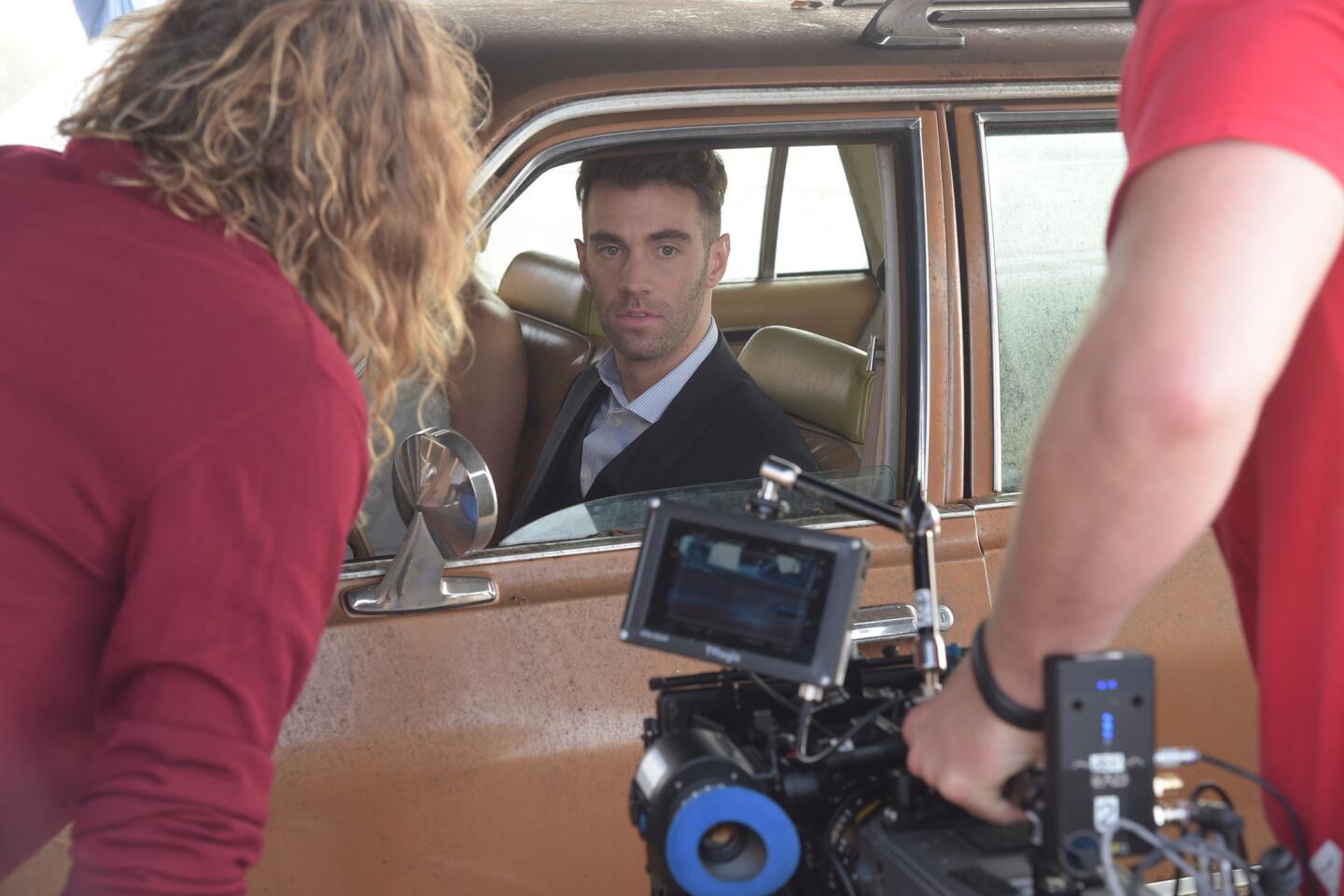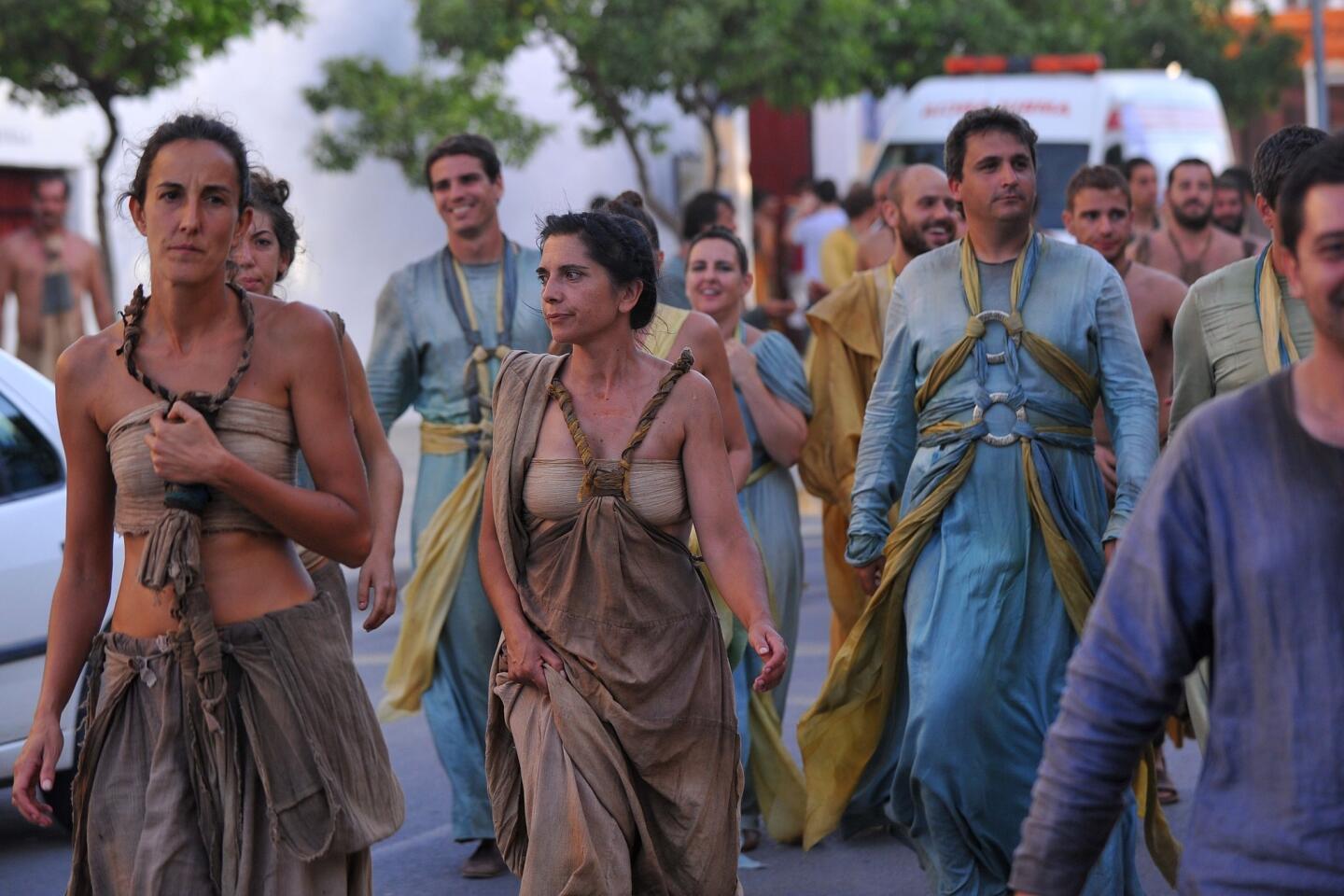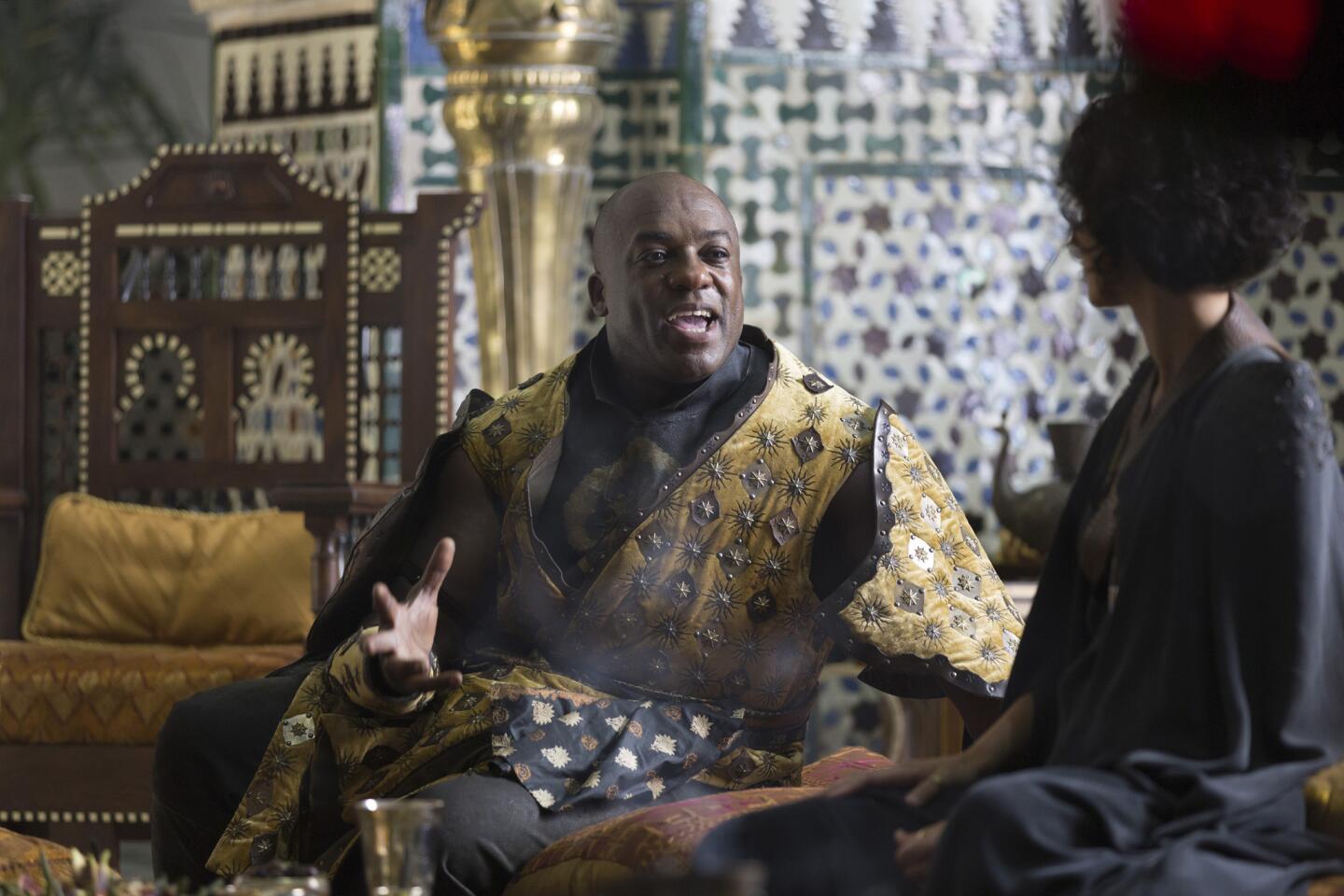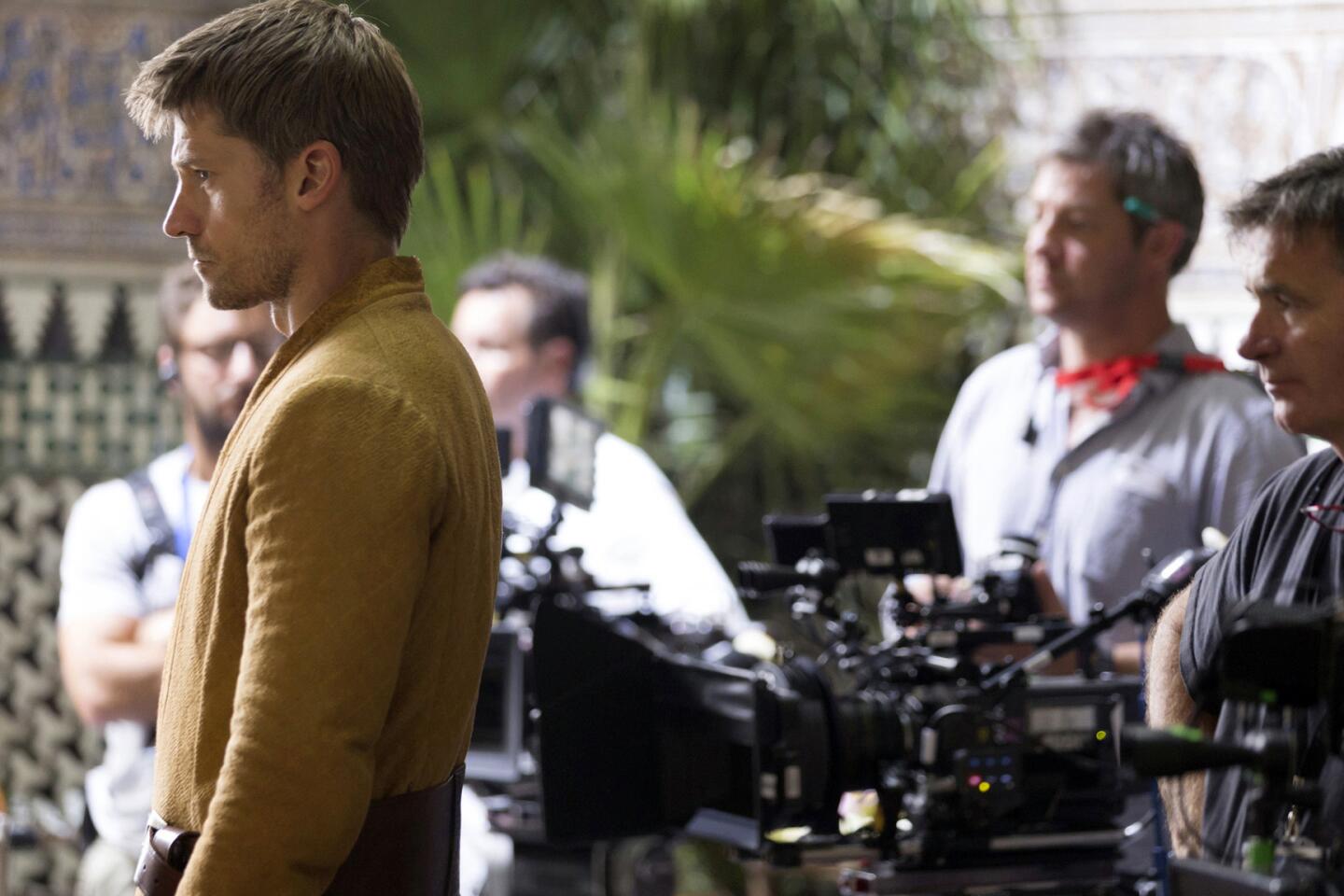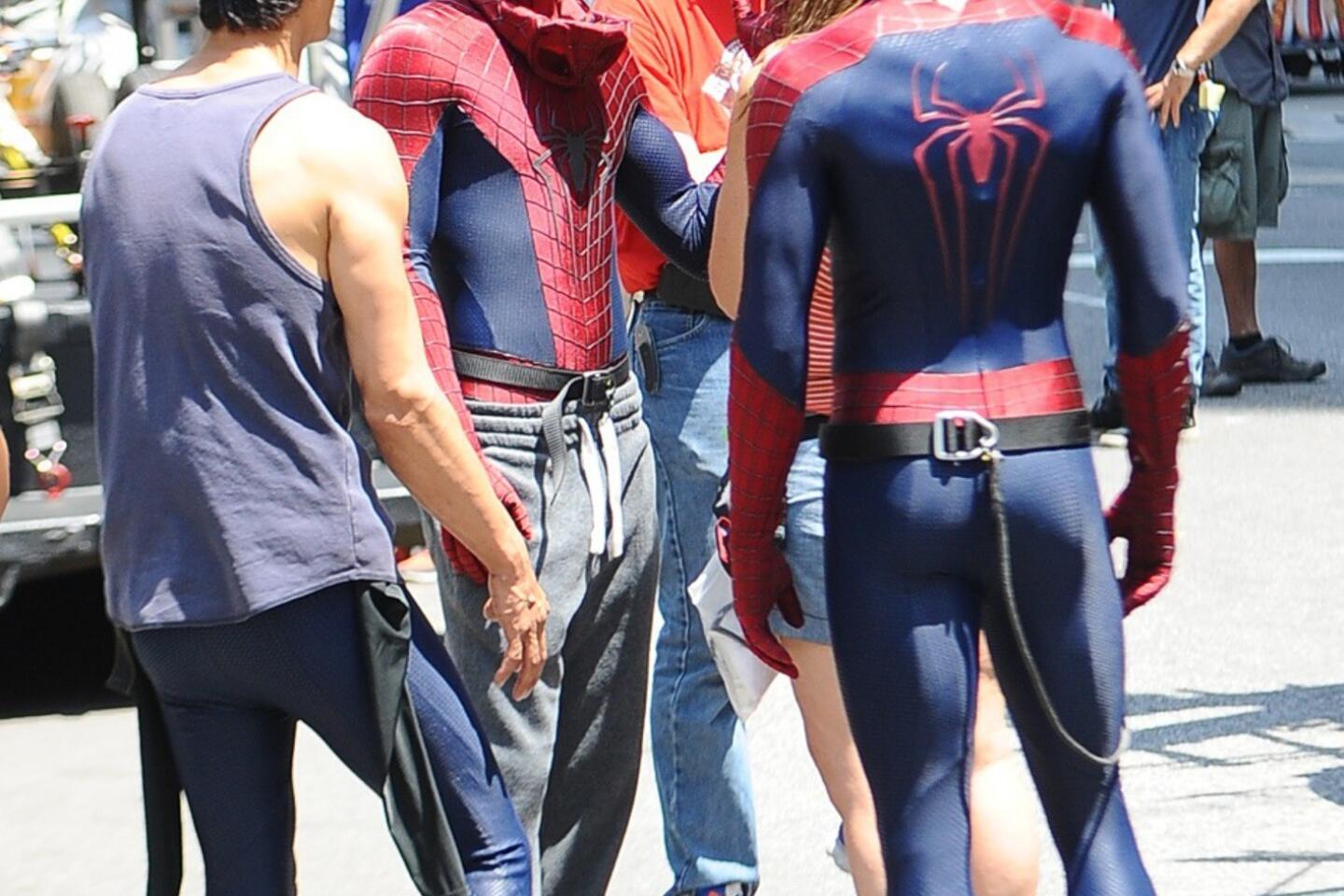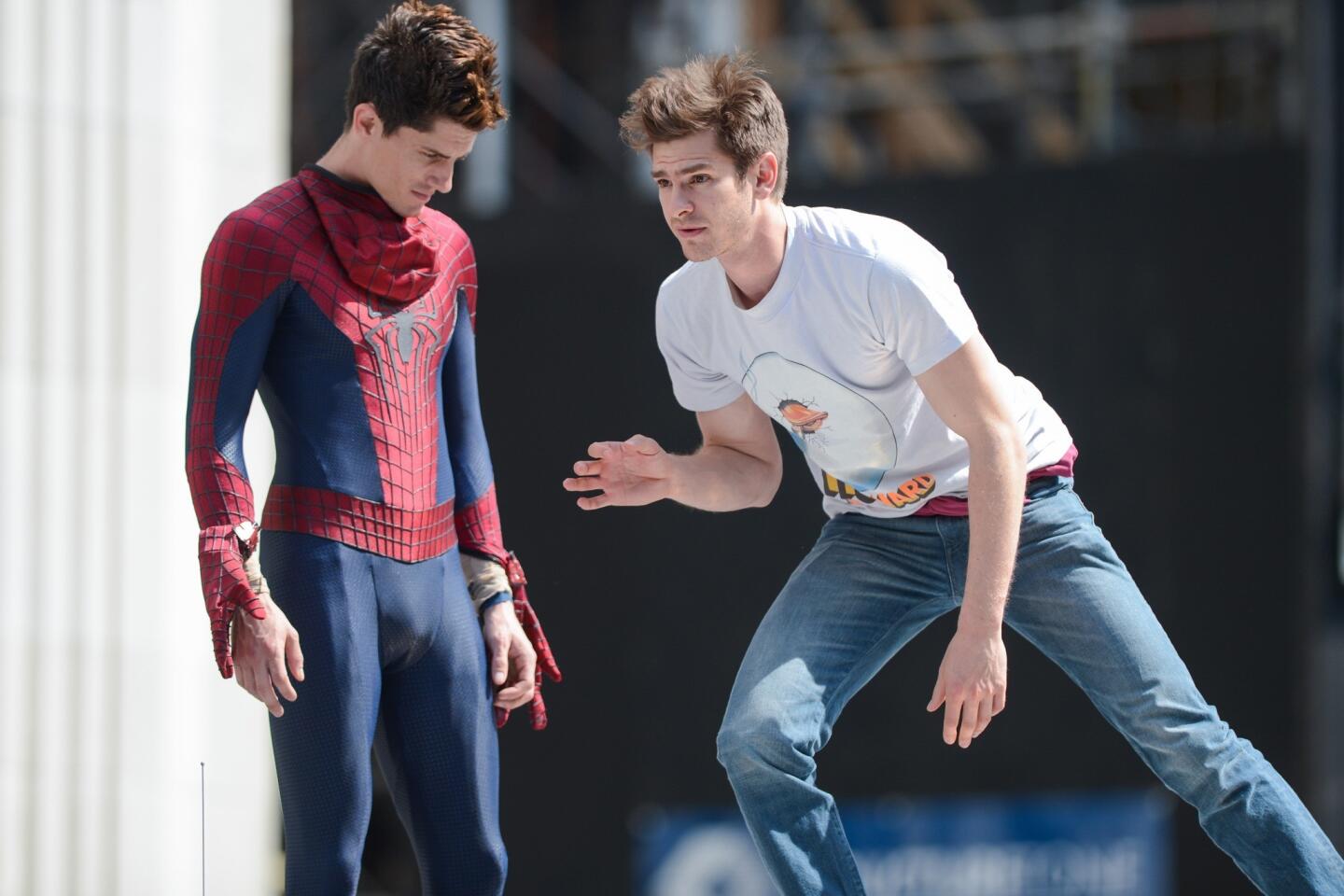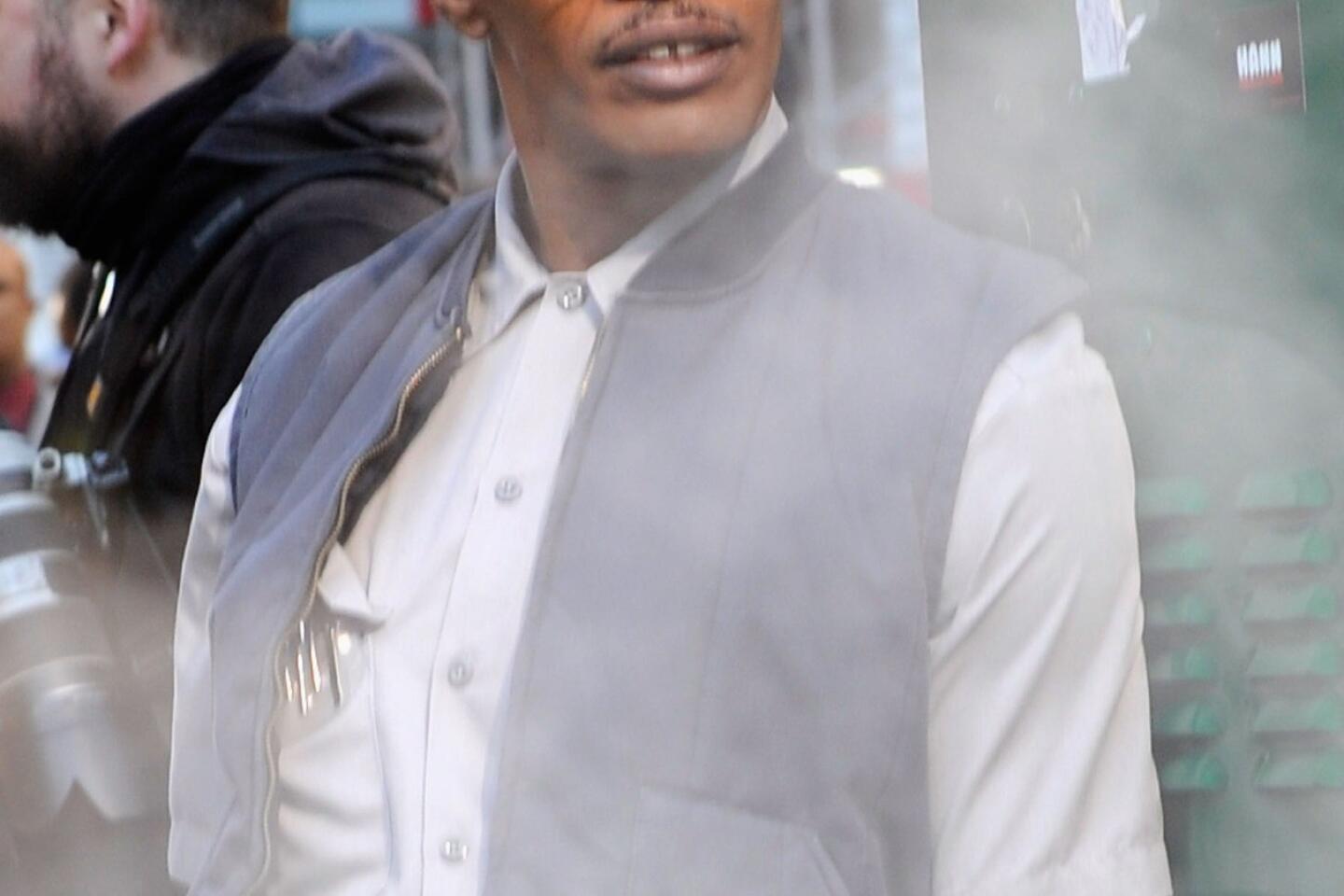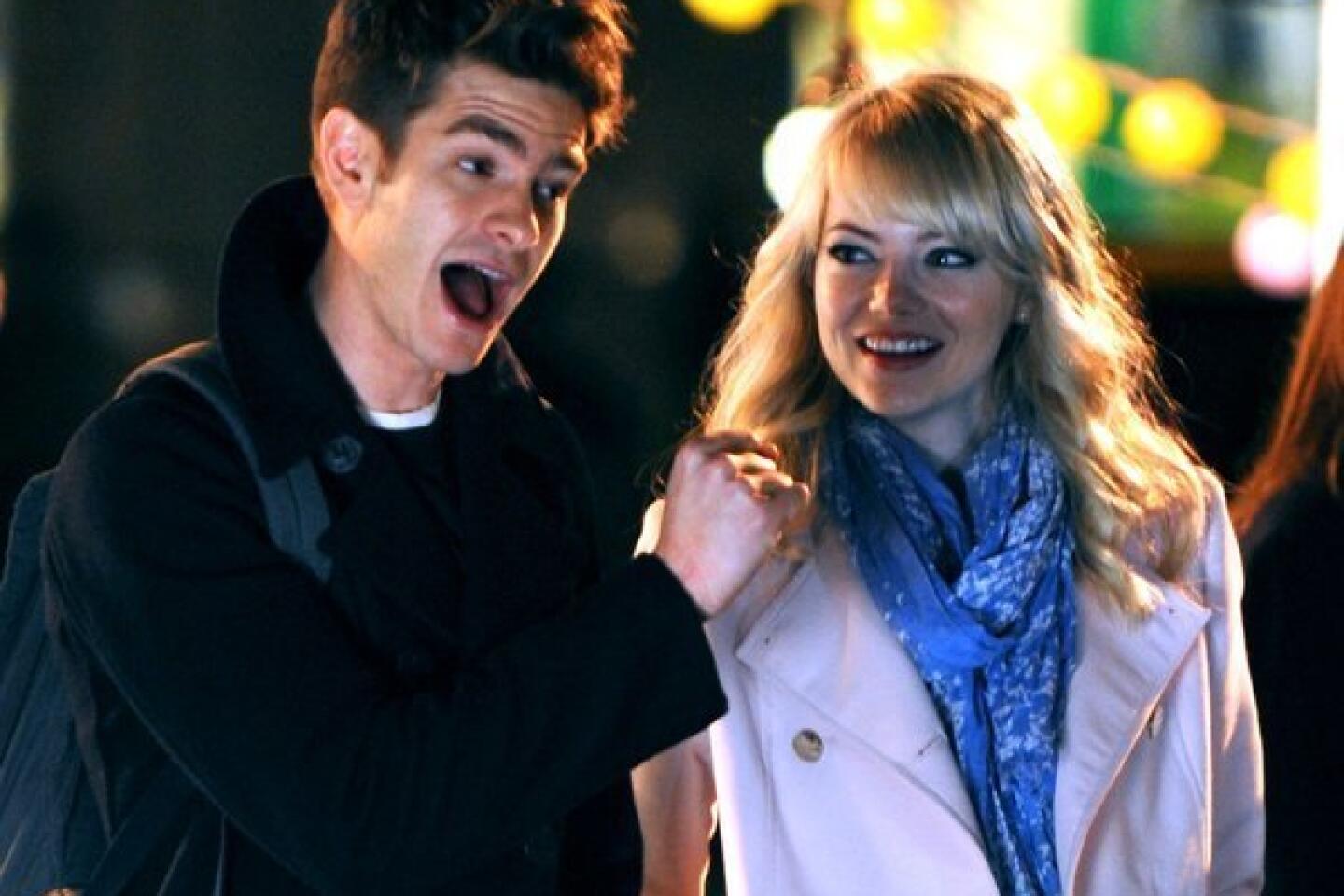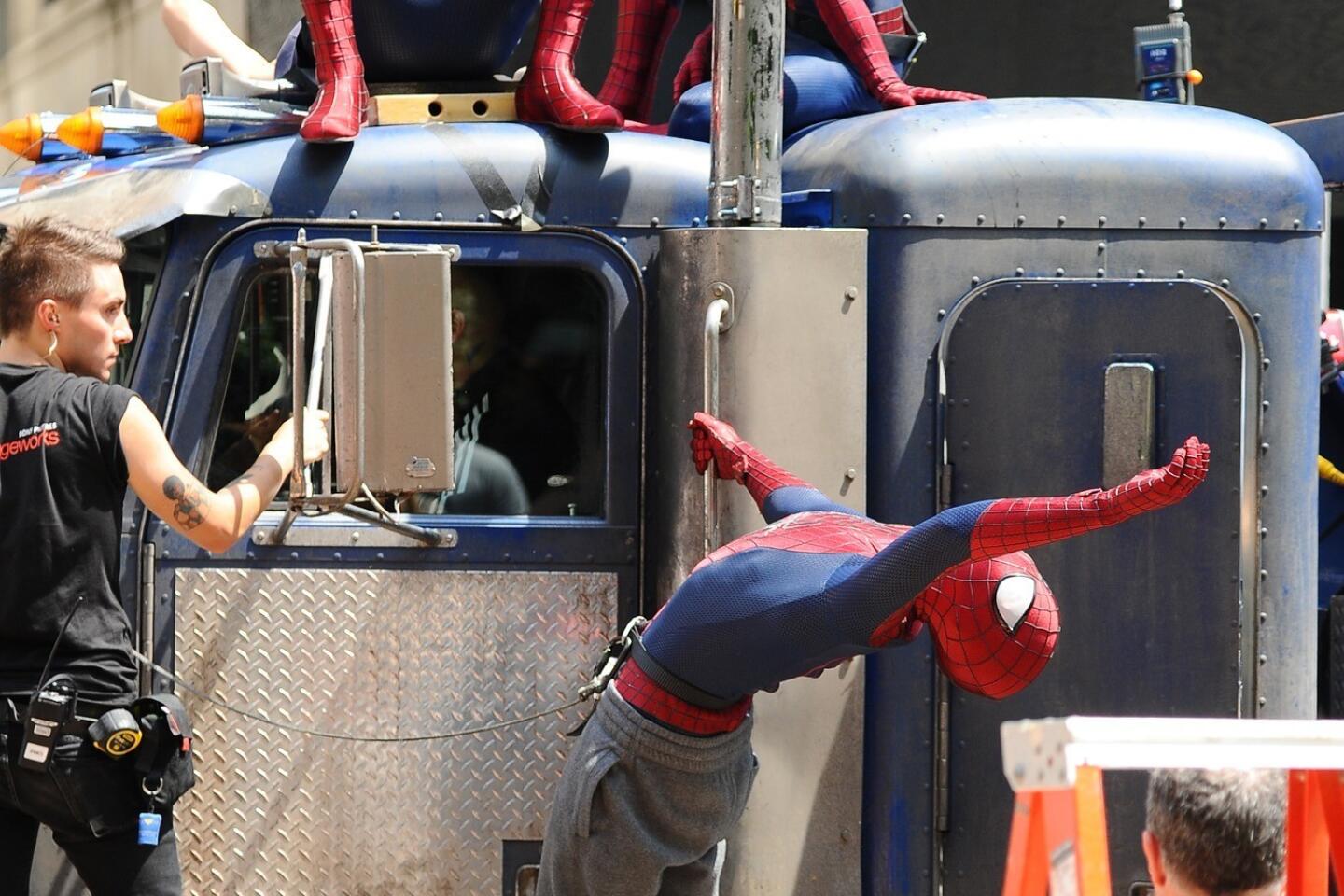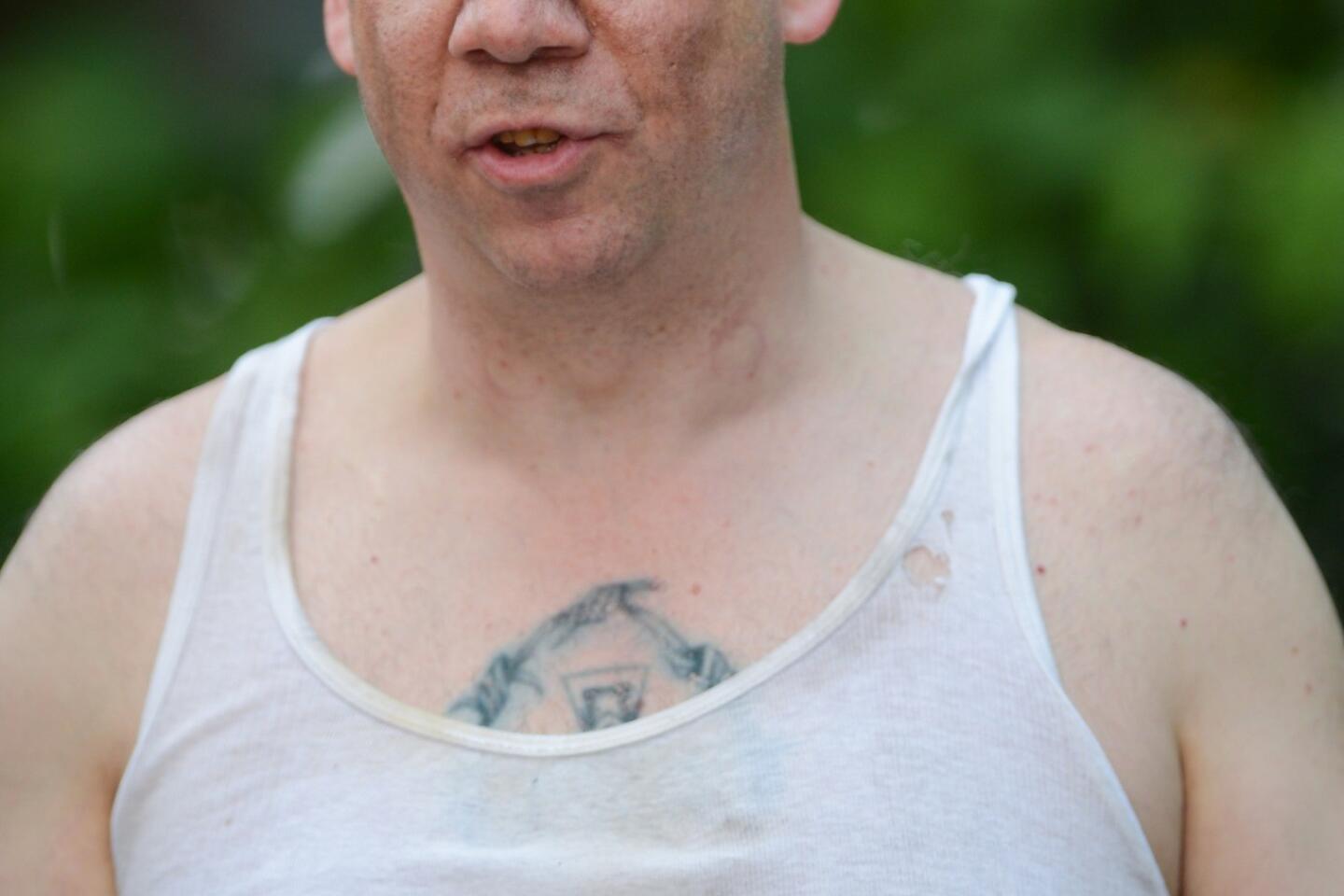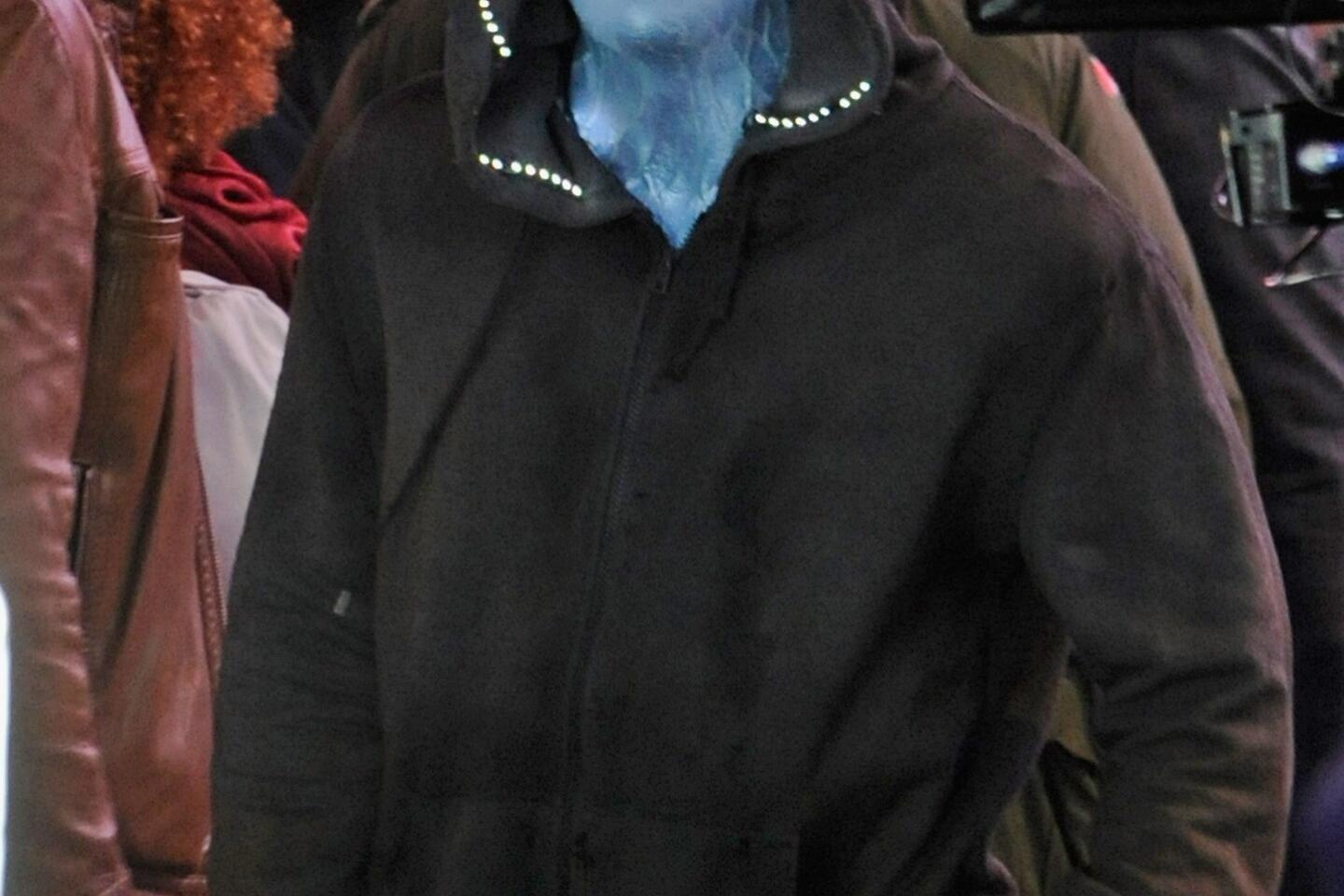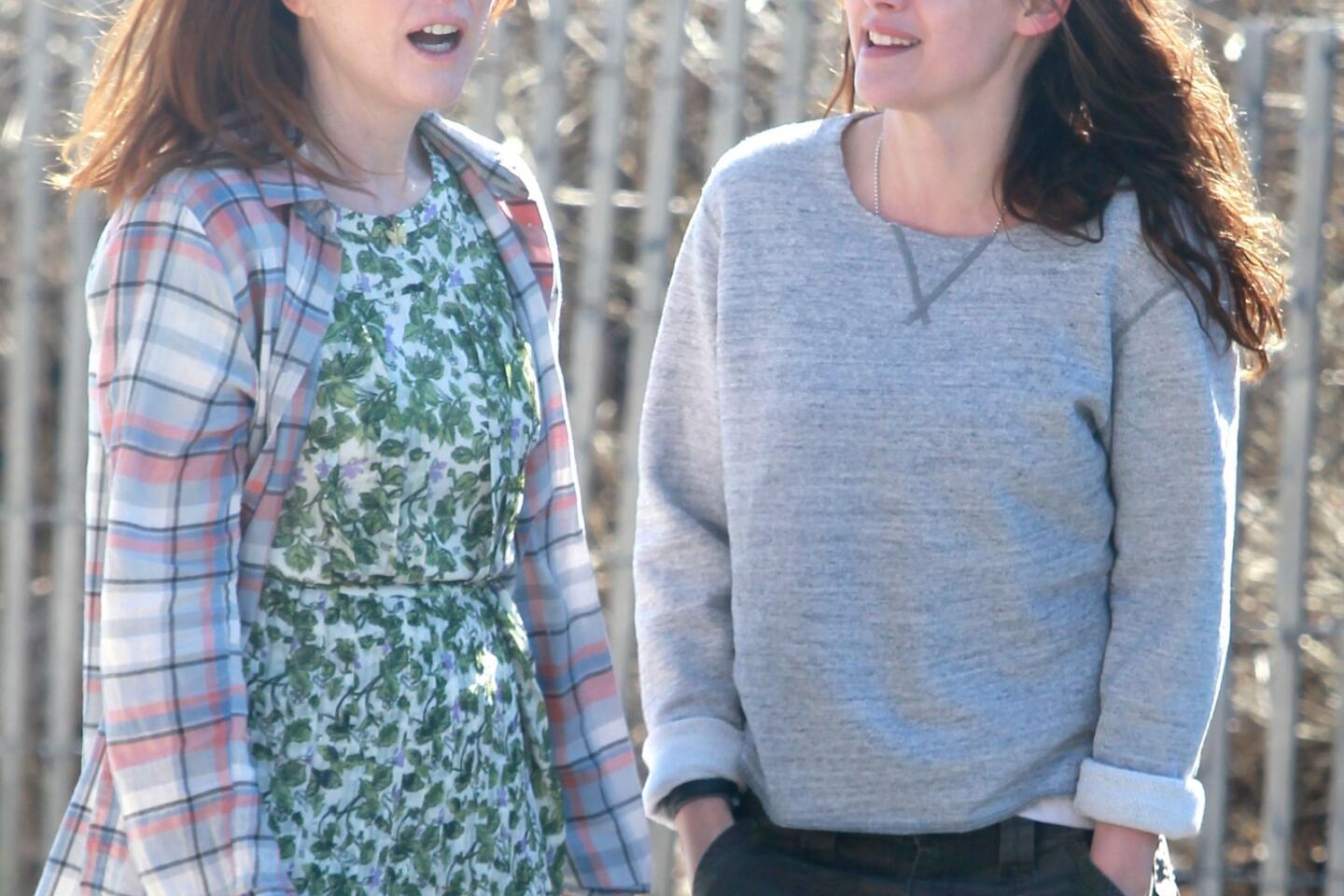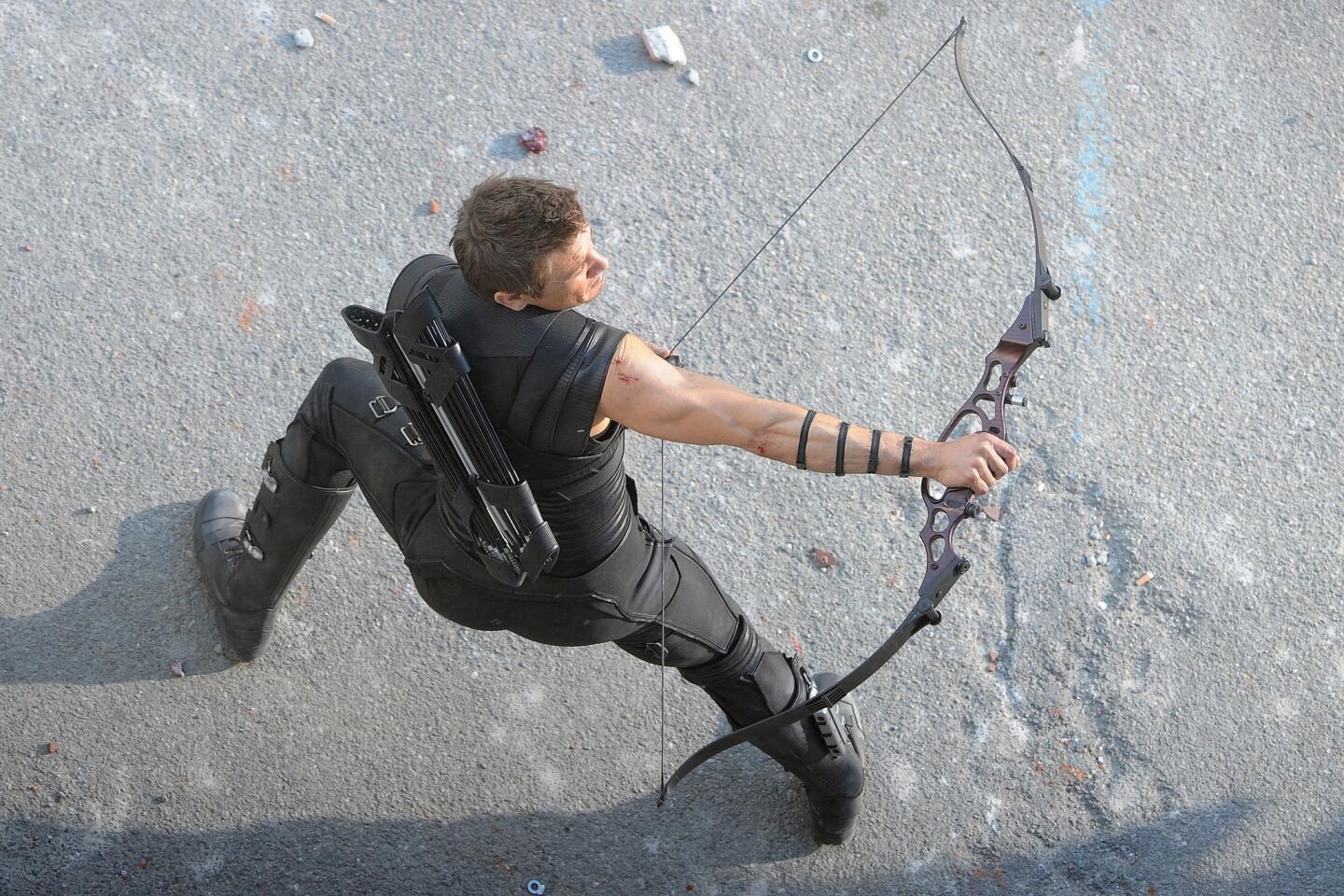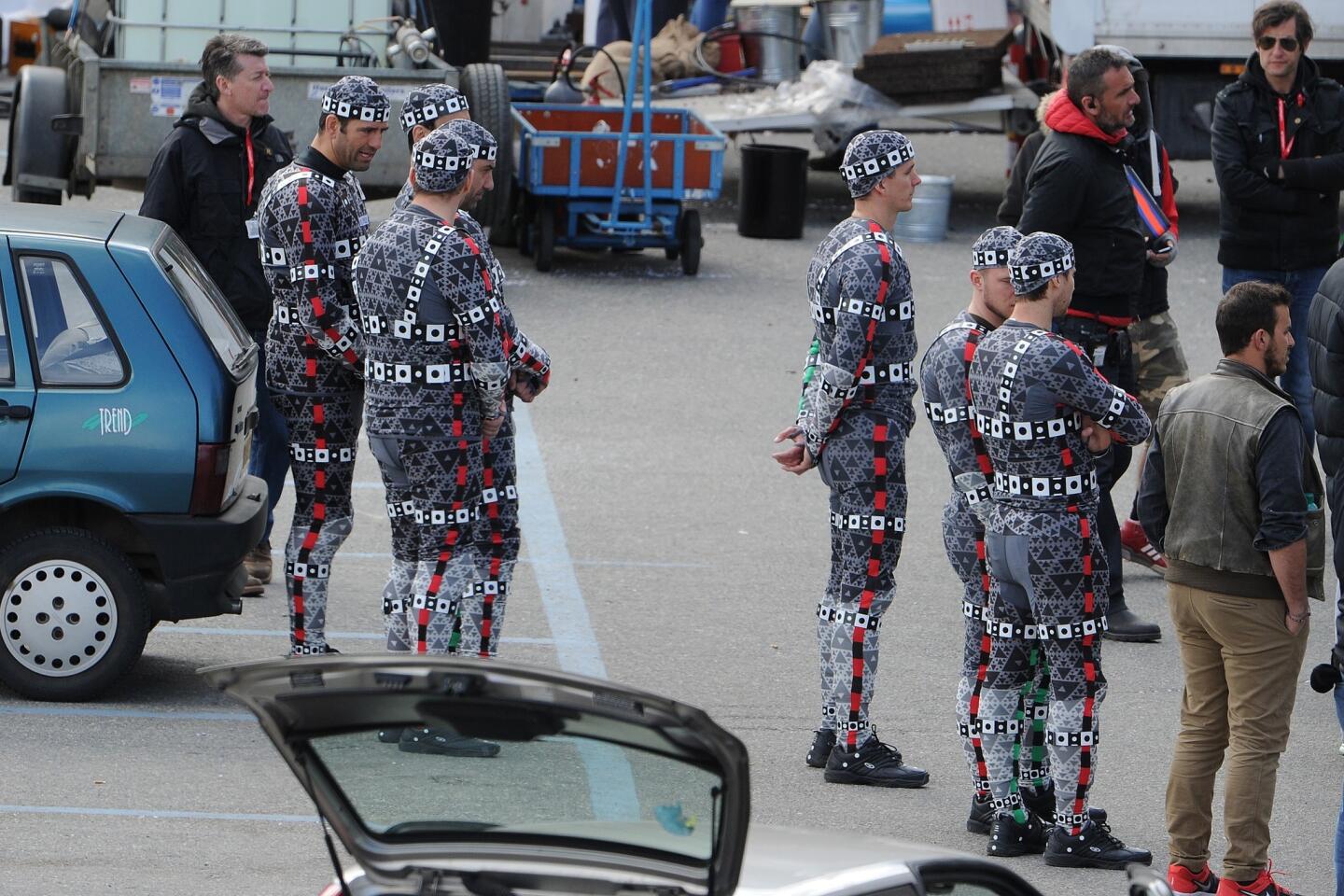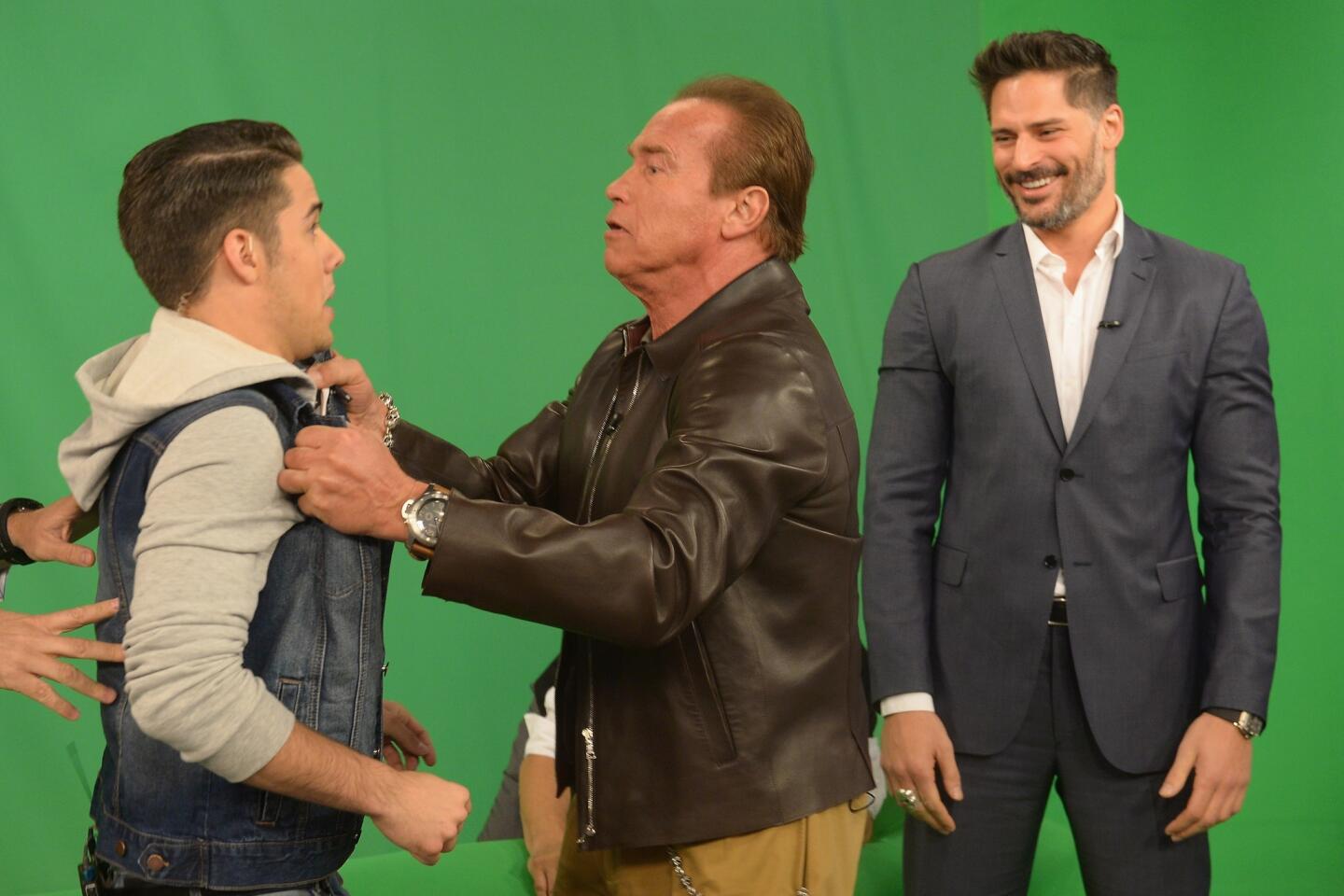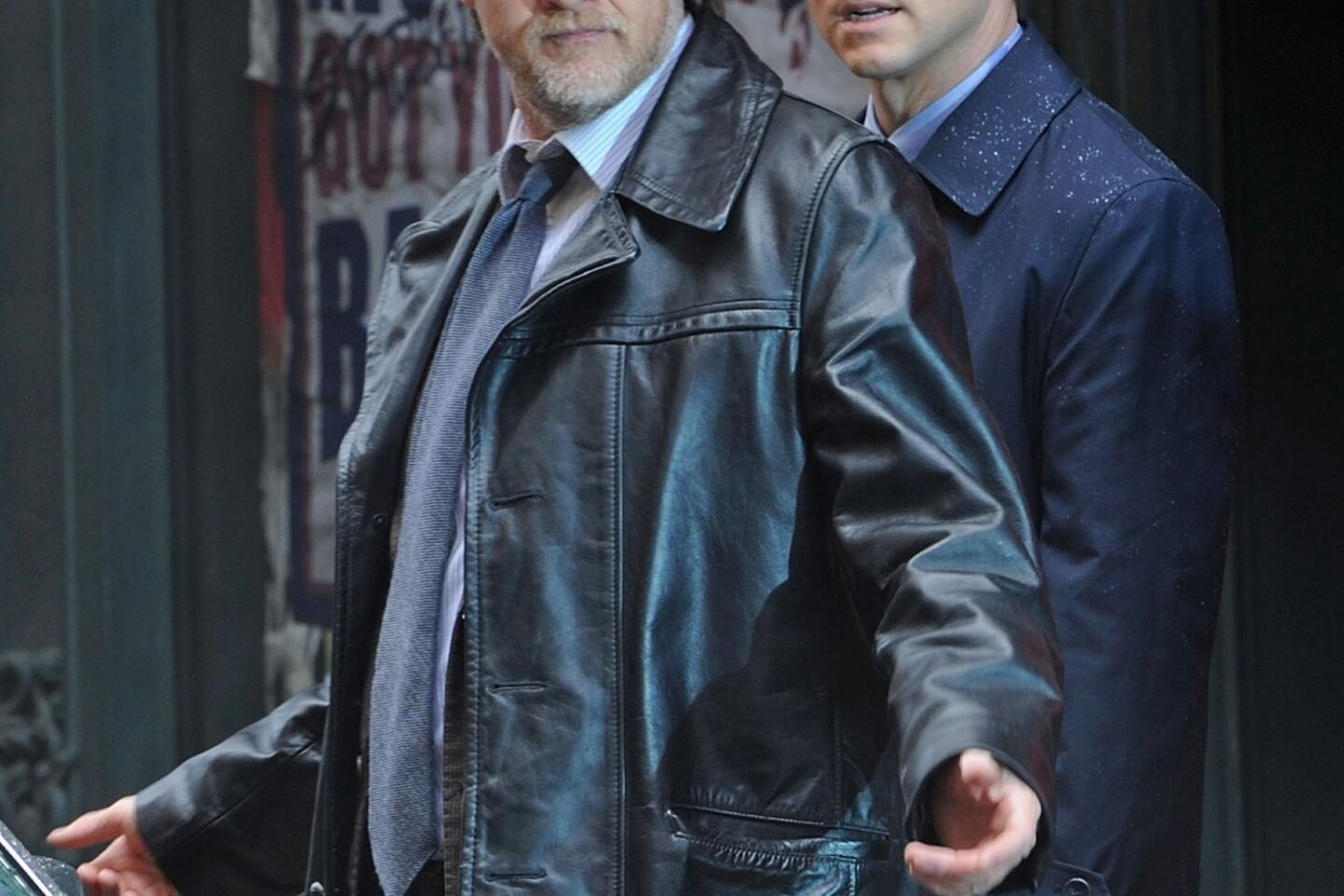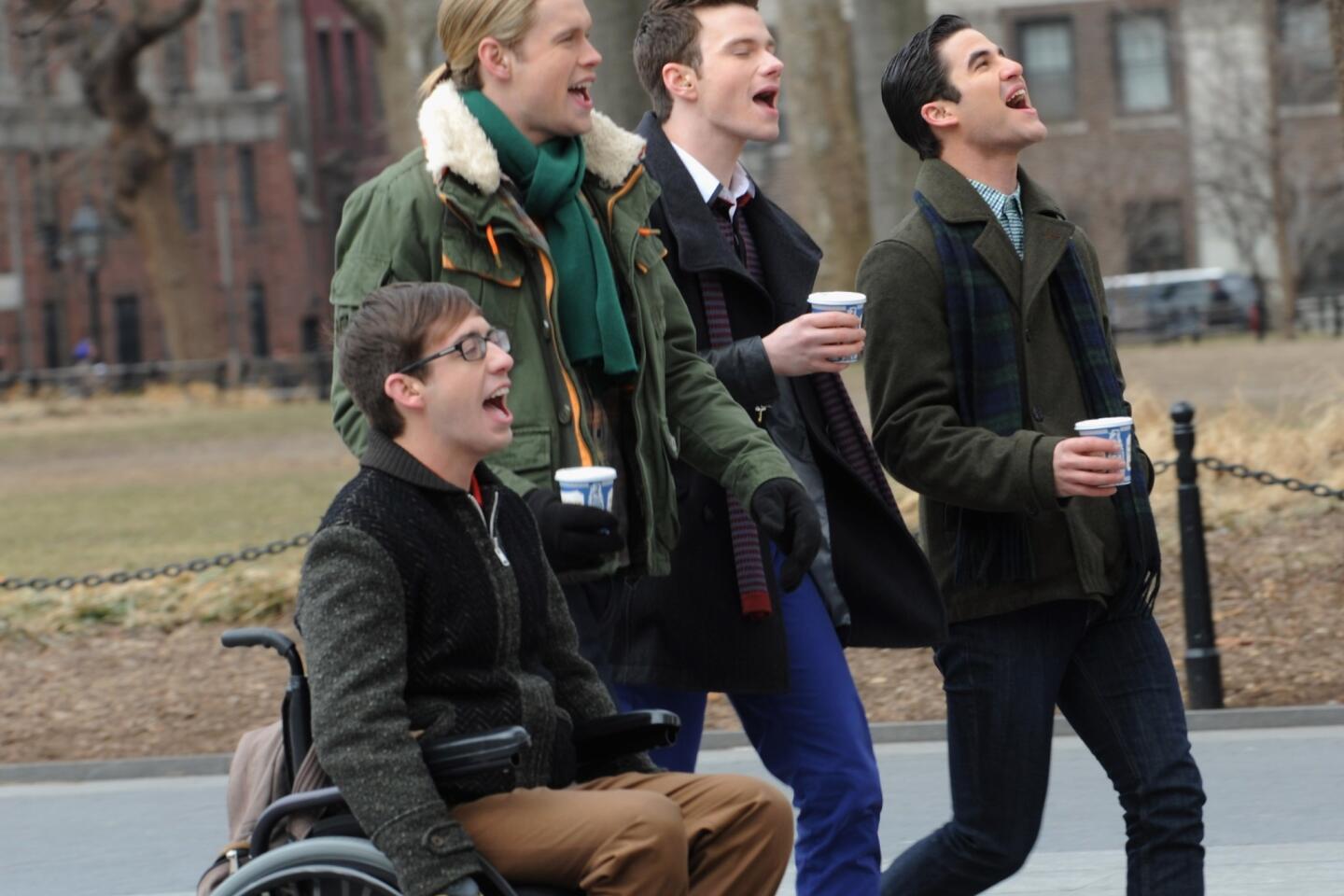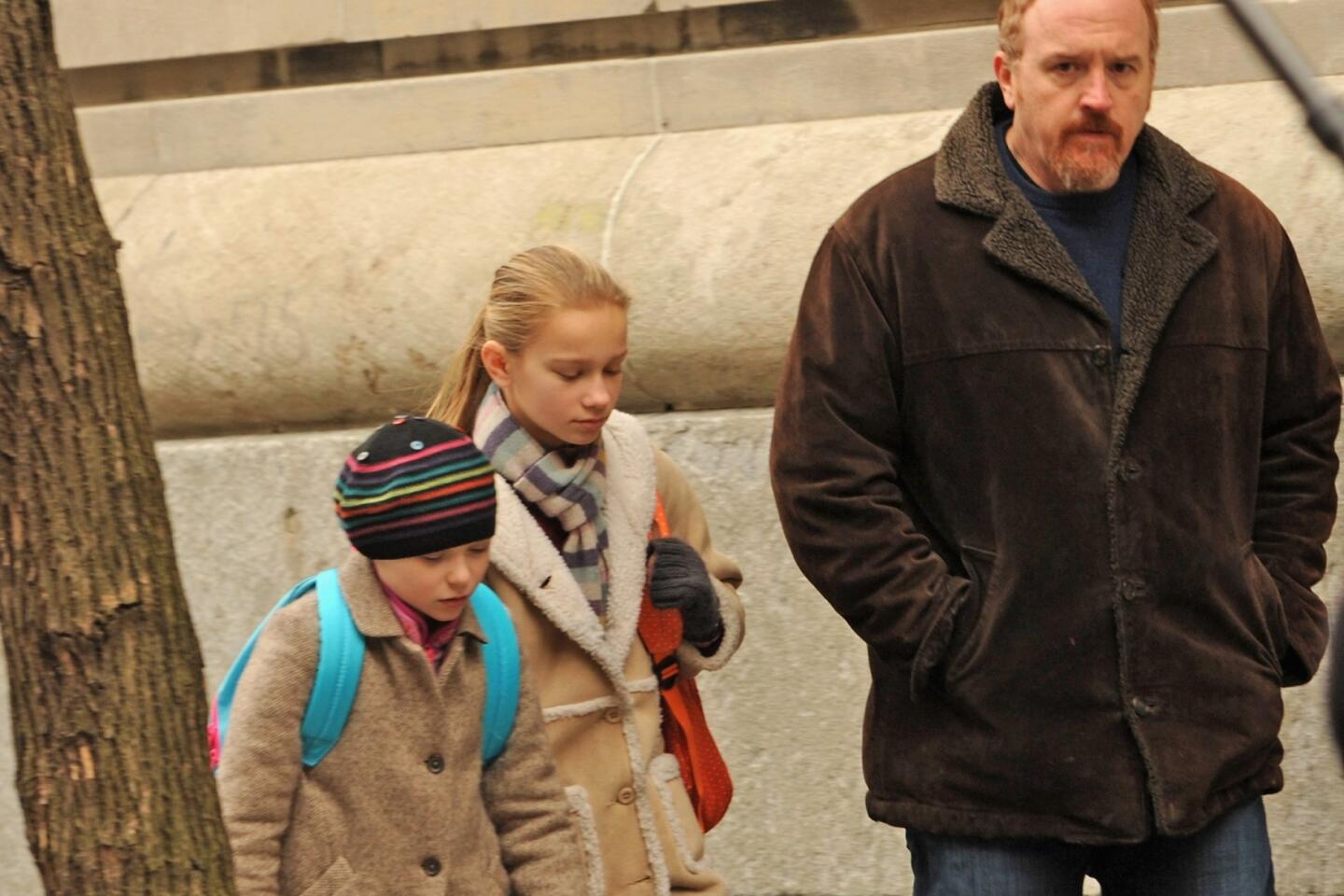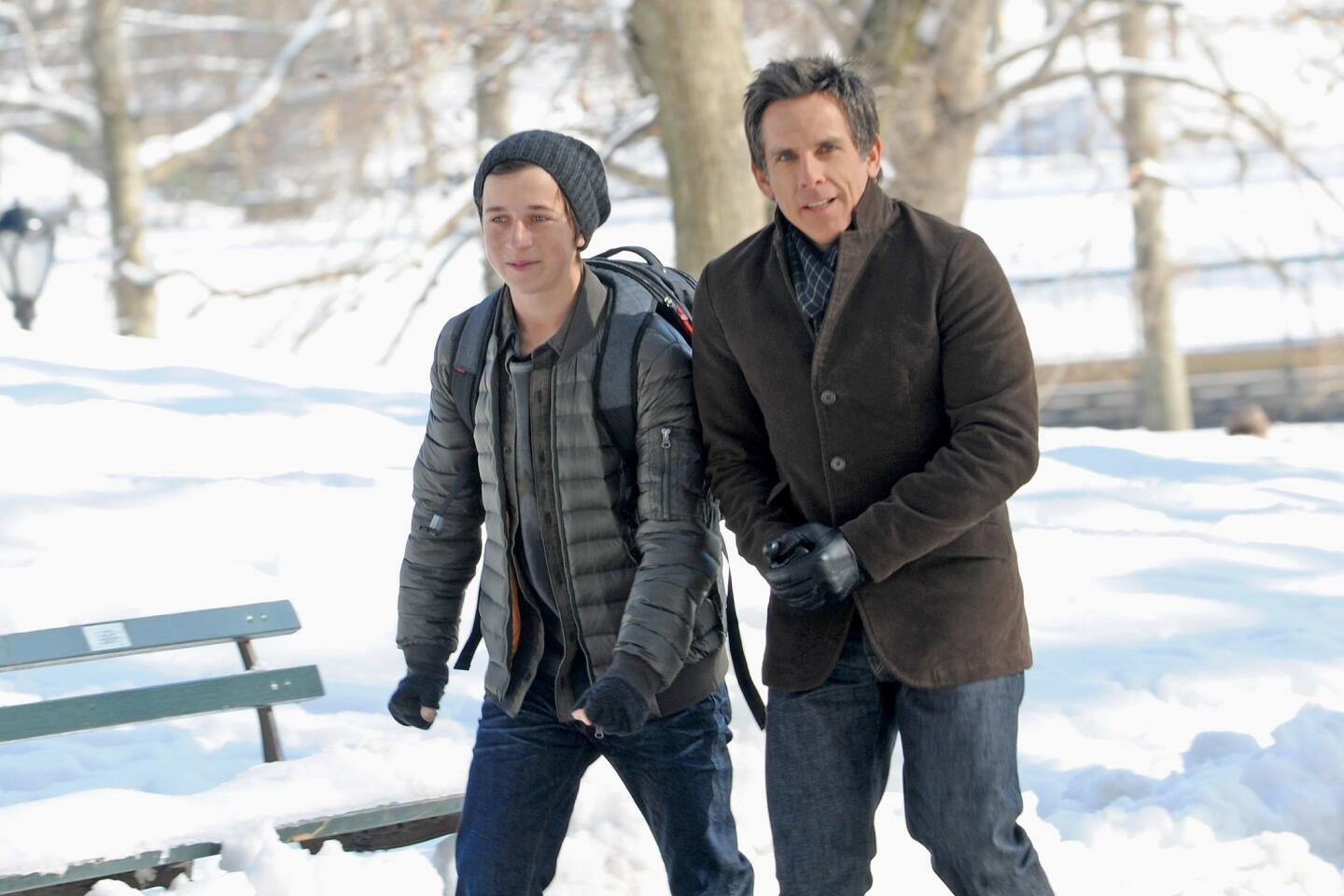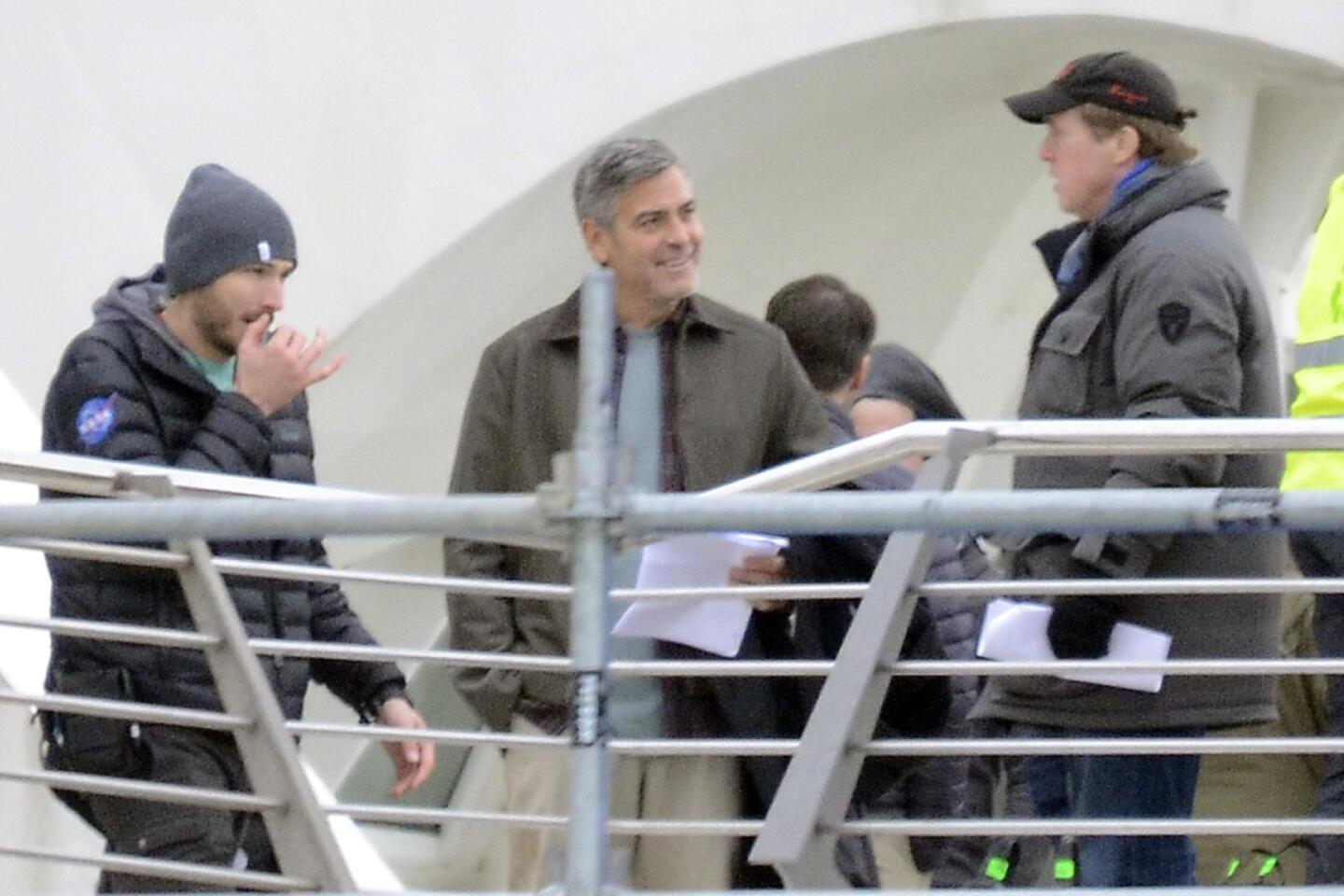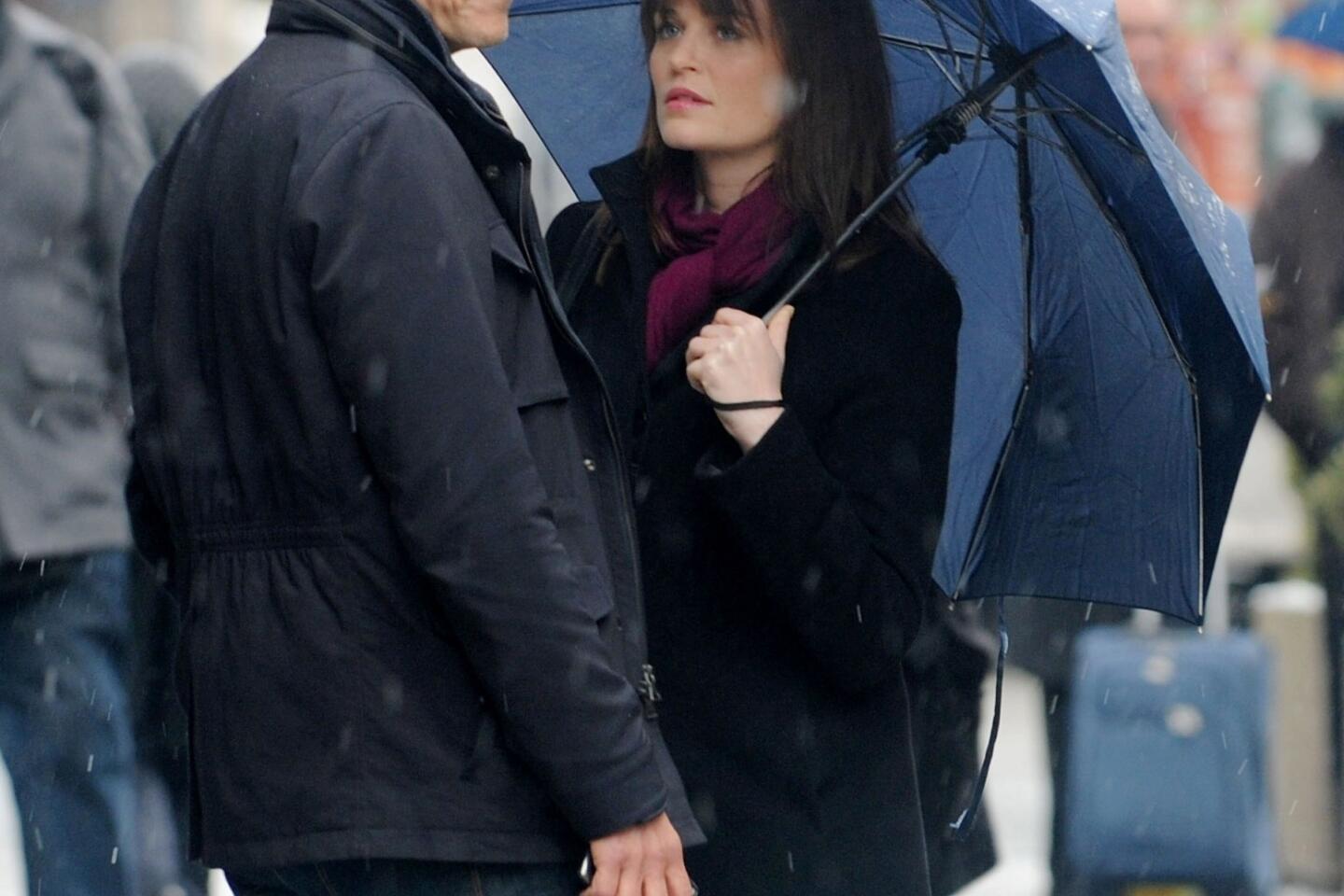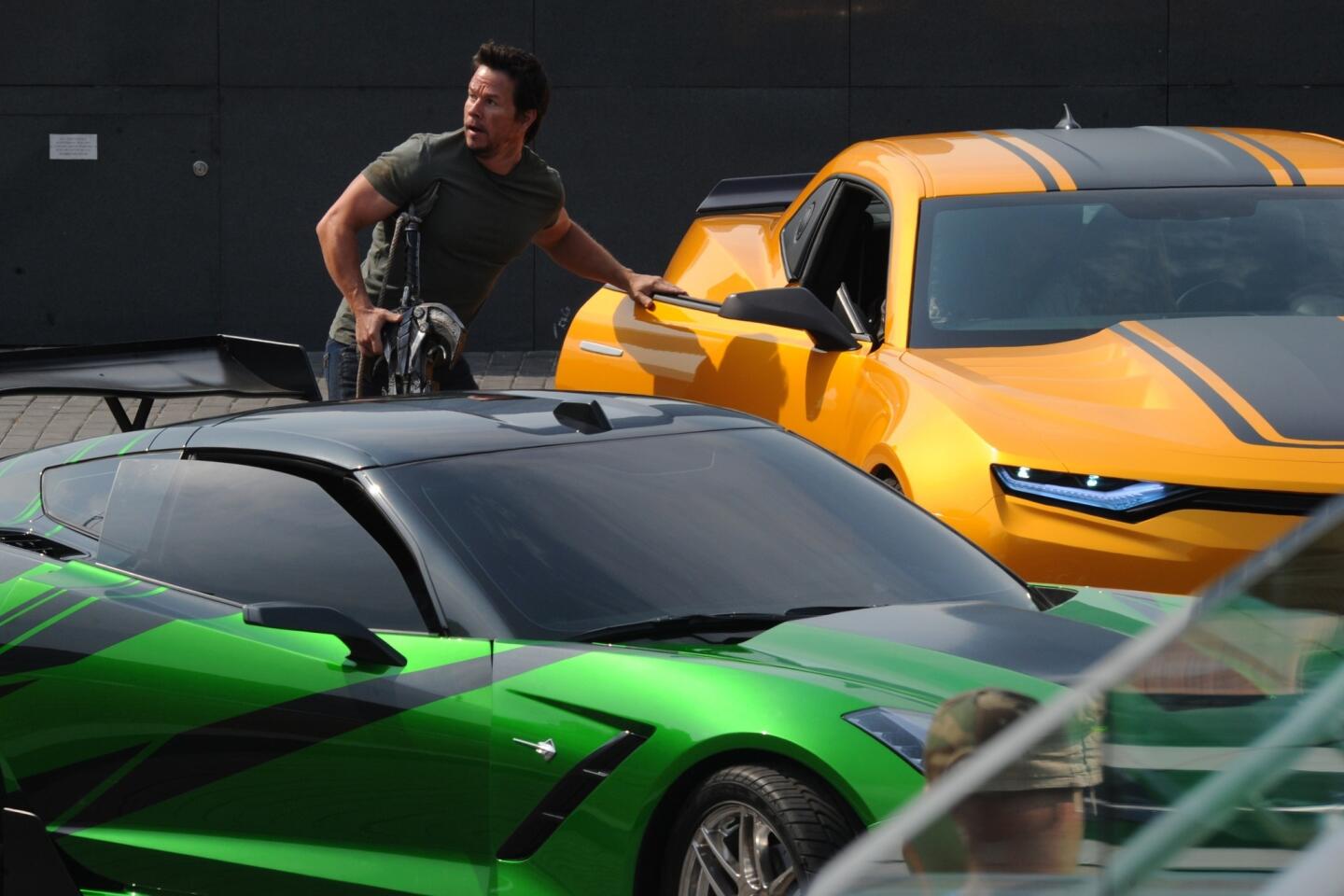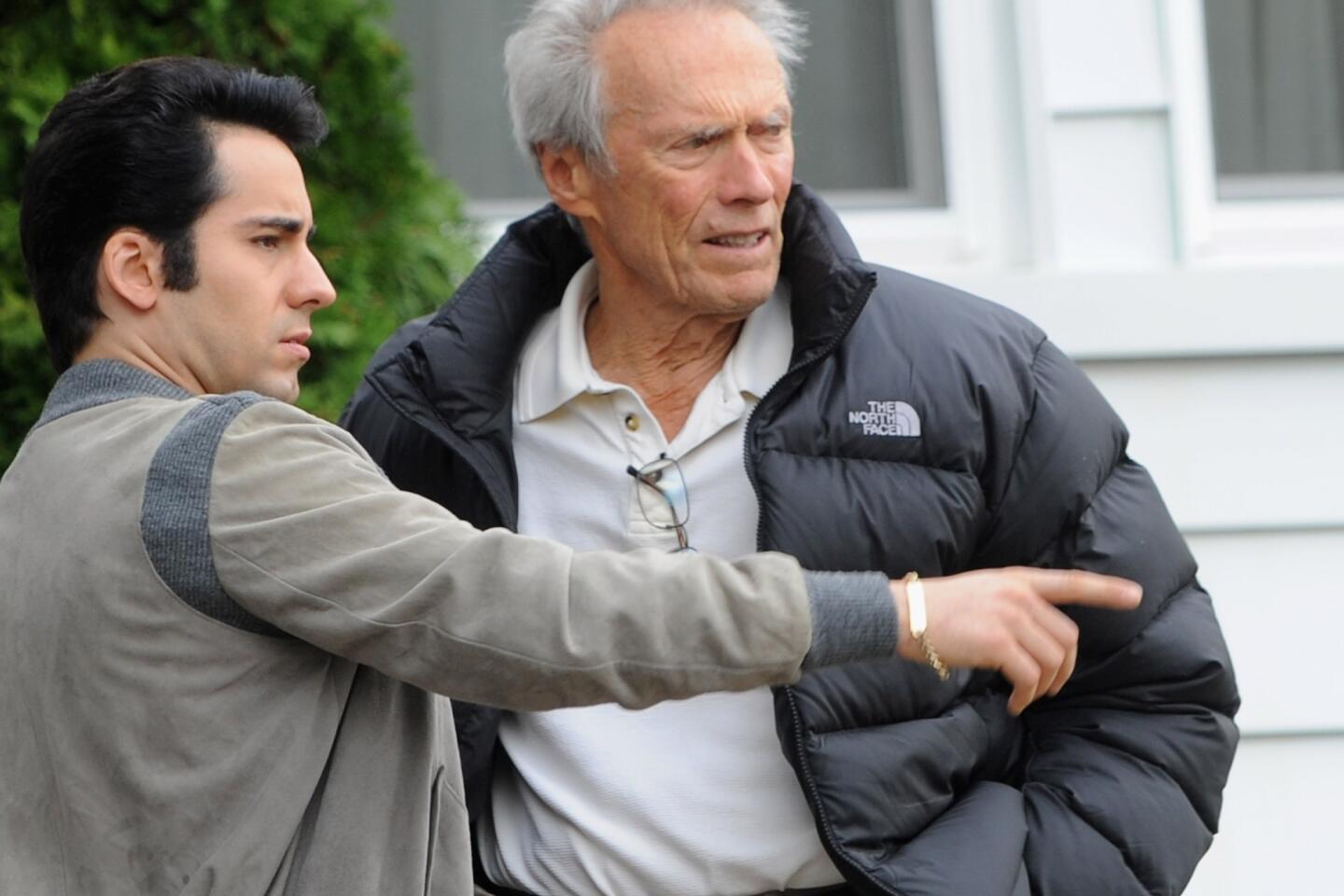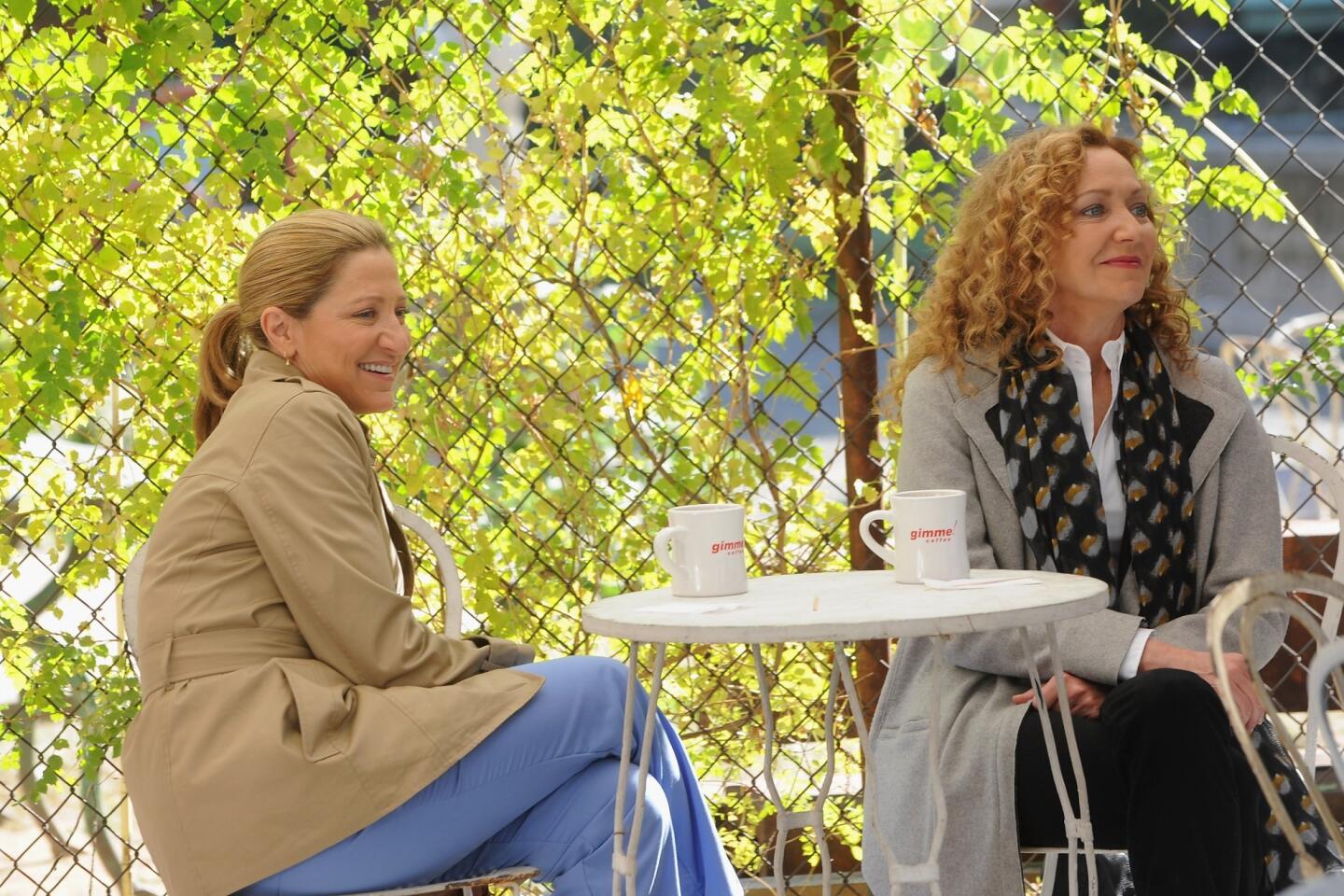Scientist Richard Feynman the heart of ‘The Challenger Disaster’
At a hearing of the presidential commission investigating the 1986 space shuttle Challenger disaster, Richard Feynman conducted an experiment of sorts in the media-packed room. The Caltech physicist and Nobel laureate clamped material from a shuttle O-ring and dropped it in ice water.
At merely the temperature of a cold soda, the rubber became rigid and dented. The conclusion was obvious — the gasket material lost its ability to seal, just as the O-rings had on the shuttle’s right solid rocket booster.
“I believe that has some significance for our problem,” the scientist said with memorable understatement in demonstrating why America’s 25th space shuttle mission had ended in horrific failure. As millions watched on television in January 1986, the spacecraft exploded, killing all seven astronauts aboard — including the first teacher in space, Christa McAuliffe.
INTERACTIVE: Fall 2013 TV preview
The famously maverick scientist is at the heart of “The Challenger Disaster,” a Science Channel movie about the national tragedy and the network’s first stab at scripted programming. And, added Debbie Myers, the network’s general manager and executive vice president, it’s just the beginning. Three original works are already in development.
“For us, it marks a new era of satisfying audience hunger for smart entertainment,” Myers said, adding that she hoped the film would make viewers appreciate “the power of science” and its ability to “speak truth to power.”
Produced in collaboration with the BBC and based on Feynman’s memoir (“What Do You Care What Other People Think?”), “The Challenger Disaster” debuts Nov. 16. Shot on location in South Africa, the 90-minute film stars William Hurt as Feynman, who is portrayed as a man doggedly searching for scientific truth while trying to avoid the quagmire of Washington politics.
The Academy Award-winning actor described Feynman as a “brilliant, brave, compassionate” scientist whose stellar reputation afforded him “the freedom to look for and tell the truth.”
PHOTOS: Celebrities by The Times
“We don’t see Richard Feynmans anymore, but they’re there,” Hurt said. “There are remarkable people alive today, but I don’t think they’re being allowed to compete with fatuous, attention-grabbing personalities,” he added, referring to the glut of low-brow entertainment in popular culture.
“The Challenger Disaster” combines Feynman’s fascinating story, Hurt pointed out, with a tragedy that wounded America’s psyche by underscoring the dangers of space travel and the fragility of human existence. The genius of Feynman and the magnitude of the Challenger explosion “are united in this particular project,” Hurt said. “They meet at the apex.”
The film also features Brian Dennehy (“The Good Wife”) as former U.S. Secretary of State William P. Rogers, appointed by President Reagan to lead the high-profile commission that investigated the explosion.
Also, British actors take on many of the other roles, including Joanne Whalley (“The Borgias”) as Feynman’s supportive wife, Gweneth; Kevin McNally (“Downton Abbey”) as Lawrence Mulloy, a heavily criticized NASA official; Henry Goodman (“Yes, Prime Minister”) as Feynman’s oncologist, Dr. Weiss; and Eve Best (“Nurse Jackie”) as America’s first woman in space, Sally Ride.
Canadian actor Bruce Greenwood (“Star Trek Into Darkness”) portrays Air Force Gen. Donald Kutyna, who subtly guides Feynman’s inquiries with the goal of protecting current and future astronauts from harm.
The movie has already been screened by some who figured prominently in events. One is NASA’s acting administrator at the time of the disaster, William Robert Graham. Graham, who had been at his post for less than two months at the time of the disaster, said he had been assured by “a whole cadre of professionals” that the shuttle would launch successfully, just as it had done two dozen times before.
“The Challenger was the worst single event I’ve lived through,” Graham said. “It was just terrible, but we had to keep going. What I told the NASA staff was: ‘Tell the truth, don’t speculate. Tell them everything you know.’”
FULL COVERAGE: FALL TV Preview 2013
As for the Science Channel movie, Graham said the filmmakers did an admirable job of portraying key characters such as Feynman, Rogers and Kutyna.
“I think they captured their relationships very well,” said Graham, who’s portrayed in the film by Nicholas Pauling. In terms of certain factual matters, however, the movie takes artistic license.
“I would call it a drama based on the people and events surrounding the Challenger disaster,” he said, rather than an attempt to convey exactly what happened.
“It was a little bit like Shakespeare’s ‘Julius Caesar.’ That’s not to be critical,” Graham said. “Shakespeare wasn’t less of a playwright because he didn’t get all the history correct.”
The movie shows that Feynman reluctantly joined the presidential commission after being recruited by Graham. Although weakened by cancer, the outspoken Feynman fully committed to the investigation after arriving in Washington eight days after the ill-fated launch.
The scientist known for his unruly gray hair, nerdy glasses and keen intellect refused to accept the notion that the explosion’s cause would never be determined, even though the shuttle was one of the most complex machines ever built and many of its 2.5 million parts were submerged in the Atlantic Ocean.
“An explanation can be found,” Feynman asserted before beginning an independent probe. Most of the managers and engineers he encountered were closemouthed, worried about their careers. But as Feynman said, if no one was allowed to determine the explosion’s cause, everyone would lose their job.
At first, Feynman believed the main shuttle engines were at fault, after discovering cracks in turbine blades and witnessing extreme vibrations during a test firing. That theory proved false, however, when telemetry data indicated the engines fired perfectly during the 73 seconds prior to the deadly blast.
A breakthrough came when NASA released photos showing a plume of flame spurting from the side of a solid rocket booster. Flame was a symptom of the failure, Feynman realized. But what was the cause? What was different about this launch compared to all the previous missions?
A call to the National Weather Service provided the answer. Cape Canaveral, Fla., experienced freezing temperatures that winter morning, while on prior launches it had never been colder than 53 degrees.
“That’s the variable,” said Feynman.
Engineers warned NASA about this critical, weather-related issue. But the space agency was under intense pressure from Congress and the military to maintain unreasonably ambitious flight schedules. The risky decision to launch not only claimed the lives of the Challenger crew members but also grounded the shuttle fleet for nearly three years.
Ultimately, Feynman’s detective work arrived at this: Rocket booster design flaw + management failure + cold weather = disaster.
Feynman didn’t live to see the next shuttle launch. He died in February 1988 at age 69 of cancer possibly caused by radiation exposure more than four decades earlier at Los Alamos, N.M.
In his appendix to the commission report, Feynman urged NASA to always be frank, honest and informative with the public so its tax dollars could be spent wisely.
“For a successful technology, reality must take precedence over public relations,” Feynman wrote, “for nature cannot be fooled.”
More to Read
The complete guide to home viewing
Get Screen Gab for everything about the TV shows and streaming movies everyone’s talking about.
You may occasionally receive promotional content from the Los Angeles Times.
